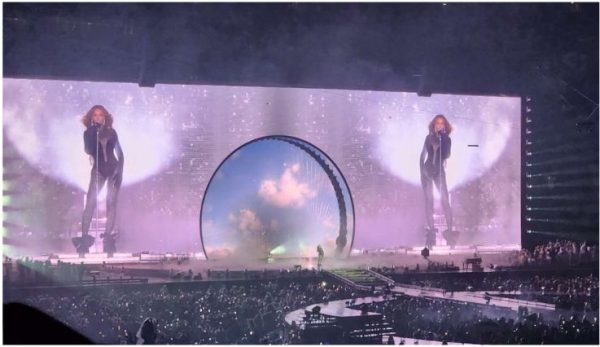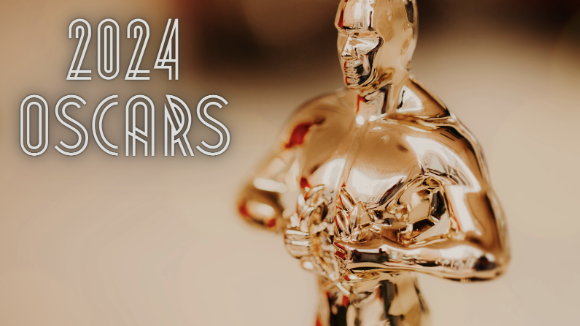Turning Red: Turning Heads
A Review for Pixar’s Latest and Fluffiest Film

A promotional poster for “Turning Red” which features Mei in her red panda form surrounded by her friends.
April 16, 2022
[Spoilers ahead for “Turning Red”]
Pixar’s latest film “Turning Red” is a movie that turned heads due to the milestones that came with its release. Not only is it the first Asian-led movie by Pixar, but the director, Domee Shi, is the company’s first solo female director. Records aside, “Turning Red” is a movie many people may be able to find themselves in. The film is told through the eyes of Meilin “Mei” Lee, a Chinese-Canadian thirteen-year-old, and describes how she navigates the world as she grows up in her home of Chinatown, Toronto.
It’s a film about being a cringy middle-schooler, going through puberty, traversing tumultuous familial relationships, finding a group of friends who share your interests, and overall, navigating the gawky teenage experience. These experiences might not be universal, but the awkward journey of growing up in the early 2000s to 2010s is one that encompasses me and a large chunk of my generation.
The not-so-relatable part of the film? Mei turns into a giant red panda whenever she gets too emotional, and for a middle schooler, that can be every second.
Shi made the symbolism behind the red panda clear in an interview with the Los Angeles Times: “I pitched it as a girl going through magical puberty. It was always going to be a girl going through magical puberty and uncontrollably poofing into this giant, red, hormonal creature.” Shi couldn’t have been more on the nose: hair (or, in Mei’s case, fur) popping up out of nowhere, being afraid of growing more independent, and feeling like your emotions are all over the place? The red panda practically screams “magical puberty.”
Unsurprisingly, there were many moments in “Turning Red” that made me tear up, laugh, or some oddball mixture of the two. Even though I’ve only seen the movie twice, I have a definite list of scenes that staked their claim in my mind. Here are three of them:
1.) Mei’s mother being supportive of her period:
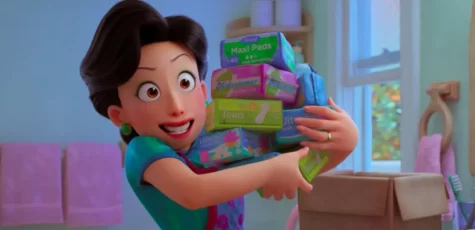
When Mei’s mother thinks that Mei started her period, she’s more than ready to whip out the pads and herbal tea, telling Mei that the latter “helps with cramps.” Being able to witness an animated movie talk so unabashedly about periods was refreshing and amazing.
Movies like “Turning Red” which aim to destigmatize the embarrassing parts of growing up aren’t common enough, and I know that I was beyond excited to finally watch one. Coming of age stories are produced by the thousands, but only a few of them are sensitive or truly representative of the transitional period of tween to teen. “Turning Red” is a film that follows Mei’s self-discovery and her magical puberty via kid-friendly terms and animation.
2.) When Mei chooses her mother over her friends:
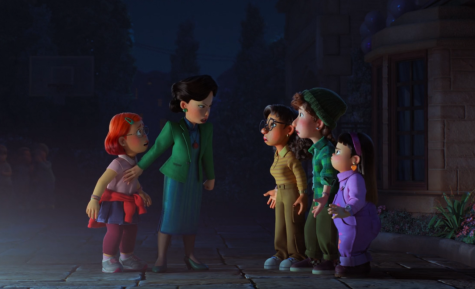
A huge part of growing up is growing aware of your individuality and independence, and not knowing what exactly to do with it. The more Mei wants to practice her newfound agency, the more Mei’s mother sees her friends as a bad influence. When her mother forces Mei to choose between family and friends, Mei chooses the former. Seeing how terrified Mei is to stand up for her friends because it means going against her mother was heart-wrenching.
Children are conditioned to believe that their parents are always right. While most parents genuinely want the best for their children, it can be hard to feel heard as a kid, and even harder to voice your opinions as you grow up. Children aren’t always demons or angels, and “Turning Red” demonstrates how being an emotional teenager means you fall somewhere in-between.
3.) When Mei chooses to keep her panda:
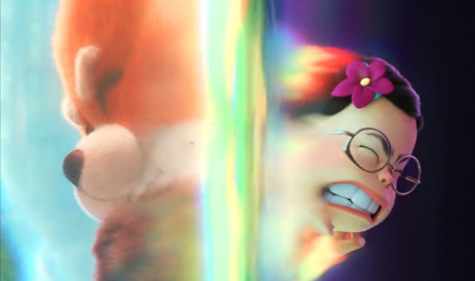
Towards the end of the movie, there’s a scene where Mei chooses to keep her red panda instead of letting it go during their family ritual. By welcoming this “monstrous” part of herself, Mei shows that there is nothing shameful about being human. It’s seen as proper to do what’s expected rather than what you want and lock your emotions away, but people are individuals and should feel free to be themselves, even if their family doesn’t fully acknowledge their identity. When Mei accepts her panda, she is accepting her differences and making those first few steps towards figuring out her sense of self.
Pixar is known for producing tear-jerker films, and maybe that’s because they can hit so close to home for the one watching. A lot of controversy surrounding “Turning Red” has to do with its audience being too “narrow,” but if people can see themselves in talking cars, fairytale royalty, anthropomorphic toys and animals, and characters from various mythological and magical backgrounds, it isn’t odd to imagine that a movie featuring the teenage experience can be relatable too.
I know that for me, I cried a total of five times while watching Mei face all the adversities that come with learning how to be comfortable in her own skin, and figuring out her place in the little bit of the world she inhabits. I’m a Chinese-American teen who grew up in the early 2010s, had the same “cringe” taste in boy bands, drew things in a sketchbook that should never see the light of day, and had to learn how growing up would change complicated family dynamics. Seeing so many elements of myself appear on the screen was definitely a part of the reason why I connected with the film so much.
My final rating for the movie is a solid nine out of ten. I recommend “Turning Red” as a movie that has something fun and refreshing to offer for anyone, and I hope that its lively animation and quirky cast of characters manages to incite something within its growing audience.





